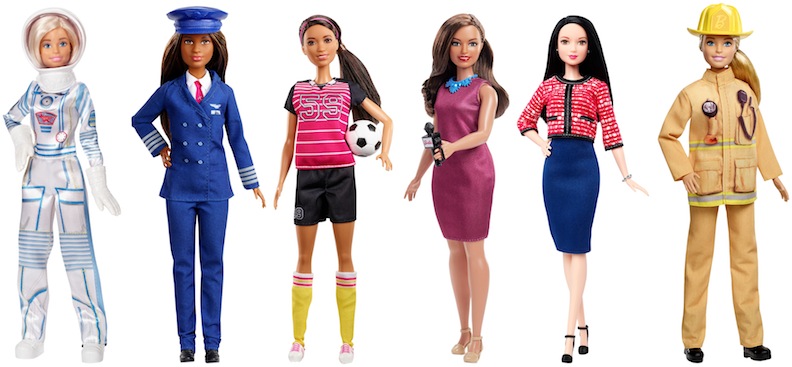
Image from
Barbie: My Love-Hate Relationship with a Doll
When I was little, I loved playing with Barbie dolls. My fondest memories of my sister include spending hours taking over the entire house to create Barbie worlds. We’d set up their houses, drive through rooms as if on long road trips, and create elaborate story lines for our dolls.
Barbie allowed us to explore a multitude of careers and lifestyles without ever leaving our rooms. Barbie always held a different dream. Whether it was a veterinarian who owned a ton of dogs and horses, or a world traveler who spent hours climbing the Himalayas (also known as our couch), Barbie did everything and went everywhere. Whenever we talk about it, we always remember our most common theme: Barbie being the career woman with the family and home, but Ken always ended up being an unemployed jerk watching football. (Little did I know that would foreshadow a lot of my dating life!)
As I grew up, my love for Barbie waned. The dolls were packed up and sent to cousins. During those years, there were a lot of news stories about how Barbie was bad. Her idealized body was impossible to achieve. She set standards so high that she was blamed for eating disorders, self-mutilation, and an unhealthy fascination with the imperfection of the female body. So I banned Barbie from my life, swearing that my daughter would never have one.
Then, two years ago, my mind changed. During a graduate course in material culture, my professor challenged me to analyze an object that I detested for my final papers. My fiancé said I should analyze Barbie. Was she really as bad as we believed? Was her perfect body a good enough reason to detest a doll that I had loved so fiercely?
I took up the challenge. So few scholars had looked at anything but her body that there was a large gap in the research. I spent months analyzing Barbie’s careers between 1959 and 1989, comparing them to U.S. Census data to see if Barbie was the ideal or reality of working women. What I found shocked me.
Barbie was good for us. She embodied ideals, but those ideals had given girls the opportunity to explore who they could be, what they could do, without ever leaving their rooms. Barbie let us be anything we wanted, and better still, she let us figure out how to get to those dreams by any means we could imagine. Despite her bad reputation, Barbie was probably the best thing to girls of my generation. She let us figure out how to make our dreams into realities and gave us the confidence to pursue them. If a doll could do it, why couldn’t we?
In the end, the paper has become my life’s work. After winning two awards, it is now taking up half of my desk space, where I analyze countless Barbie dolls and read every book there is about her. It’s not just about the careers anymore. It’s about redeeming a doll so many have shamed into silence.
Yes, Barbie gave us standards that seem nearly possible to achieve. In some ways, especially her body, we will never be able to (and medically shouldn’t try) achieve them. But Barbie isn’t about giving girls a doll to become. Barbie is about giving girls the freedom to dream, to do, and to be absolutely anything they want.
There’s no better role model for my little girl. Granted, her first doll will likely be Captain Janeway from Star Trek: Voyager, but why give her one dream when I can give her two?
-Tiffany Piotti
Junior Girl
Girl Museum Inc.
